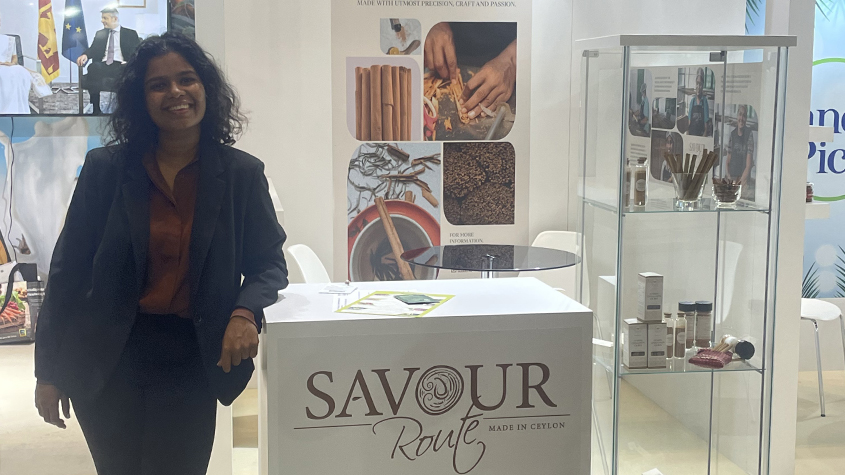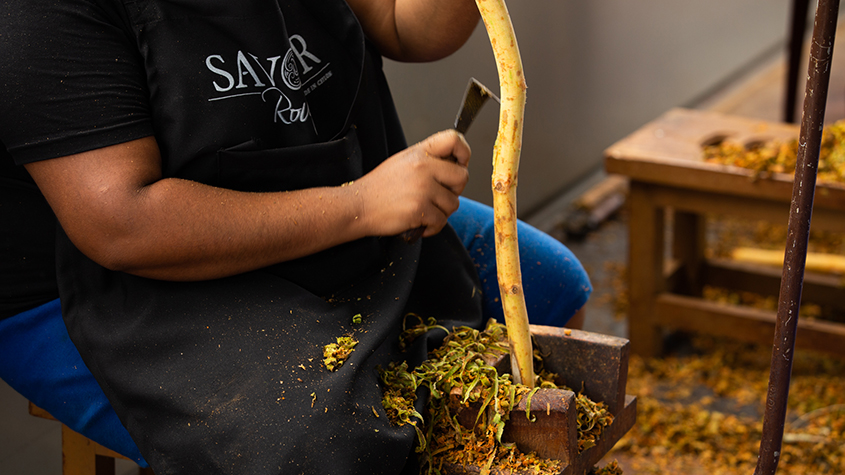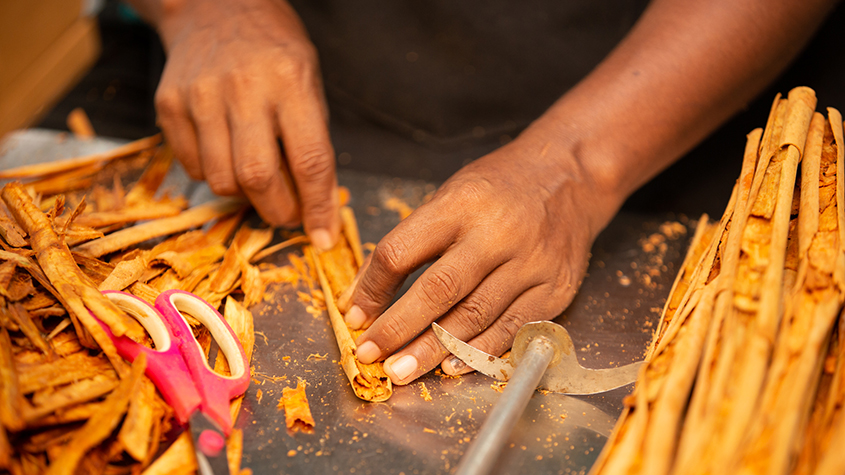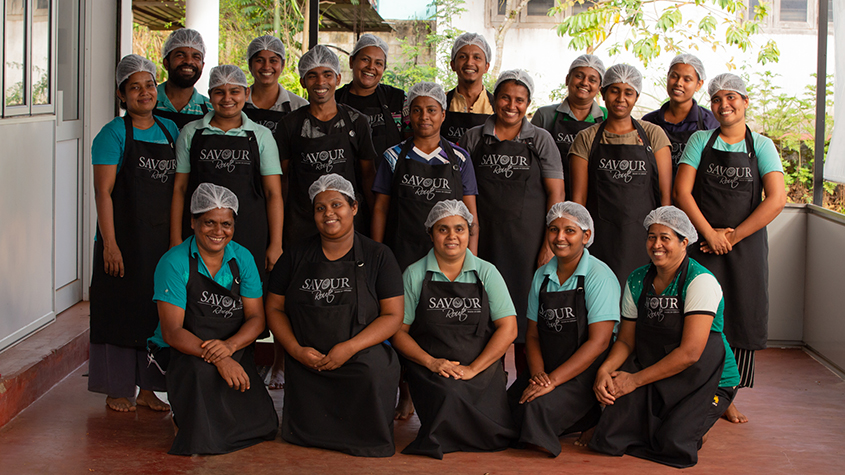Traditional Knowledge Preserves the Unique Taste and Quality of True Ceylon Cinnamon
Ceylon Cinnamon has been known for centuries and is thought to have been used as far back as ancient Egypt for its preservative and medicinal properties. Sri Lanka is the largest global exporter of cinnamon and hosts several SMEs producing the spice following traditional methods. Savour Route is one of them, headed by Senuri Gamage, a young entrepreneur, who combines ancestral methods of producing high-quality Ceylon Cinnamon, with a highly qualified staff, and her determination to provide jobs to women.
After graduating with a Bachelor’s in international business in Malaysia, Senuri was not really attracted by the idea of a 9-5 job. She always planned to start her own business.
She started by conducting extensive market research on cinnamon. “During my research, I fell in love with the processing of cinnamon,” she said. “I was amazed to see how complicated it is, and how beautiful it is.” “I wanted to tell the world because not many people know the technicalities involved in that process and how much skill is needed to make a small cinnamon stick.”

Senuri also found that even though Sri Lanka is the largest exporter of Cinnamon, there was a gap in quality. She decided that she would favor a small production, with high quality, aroma, and flavor. “I wanted to be an advocate, to increase cinnamon’s value,” she explained. She founded Savour Route in January 2020, at the brink of the Covid-19 pandemic, which prevented any exports until October.
Traditional Ceylon Cinnamon Harvesting and Processing
Original cinnamon is indigenous to Sri Lanka, Senuri noted, and the processing skills are passed from generation to generation.
Cinnamon is a fast-growing bush with several thin tall trunks. The first harvest can happen three years after planting, and then the trunks can be regularly harvested every six months. Traditionally, the trunks are harvested very early in the morning, before 6:00 am. The trunks are then delivered to the factory, where they are soaked in a water tank to keep them wet and make the peeling of the outer bark easier.
The first layer of the trunks, the outer bark is then peeled off using a traditional scrapping tool: soorana kokeththa.

“The second layer of the bark is what we call cinnamon,” Senuri explained.
Now is the time to remove the cinnamon peel off the trunks, which are first thoroughly brushed manually with a brass rod, or with a manually-operated rubbing machine. The pressure applied on the trunks makes the cinnamon peel (leli) easier to detach with a traditional tool called thalana kokeththa. According to Senuri, this operation is the most specialized and hardest part of cinnamon peeling and requires a lot of experience and skill.
After that operation, small chunks (podi) of the peel are still attached to the trunk, and will also be delicately removed. The peel is then air-dried for a couple of hours so that it naturally curls. Quillings are then inserted into the larger peel in an overlapping manner to make the final cinnamon quills. The quills are cut into 21 inches pieces and left to air-dry for 14 days. By that time, the quills are nicely naturally curled and ready for bailing and cutting into sticks, Senuri explained.
Locally-Sourced Ceylon Cinnamon
Savour Route produces between 15 and 20 tons of cinnamon quills per year. The company sources its cinnamon from some 80 smallholder farmers in the vicinity of the factory and produces both organic and conventional cinnamon.

The cinnamon sticks come in four grades corresponding to the diameter of the quills. The finest quills (Alba) are the most expensive as their manufacturing is more difficult and their flavor very delicate and more subtle than larger quills, which have the strongest flavor.
Savour Route exports to several countries, including Russia, and the United Kingdom, and is in the process of arranging export to other European countries. The company also serves the local market.
Sustainable Cinnamon Production that Empowers Women
Savour Route currently employs 25 staff, 23 of which are women, many of them breadwinners for their families. “It was a choice to give job opportunities to women,” Senuri confirmed. “They educate their children, feed their families, build their house, and I am really happy to be able to contribute to their life.”

The company also tries to work sustainably and participate in the circular economy. “Cinnamon is a very versatile plant and we use the outer bark as compost.” The trunks can be used as firewood, and Savour Route provides the water from its water tanks for further irrigation use.
Savour Route Authentic Pure Ceylon Cinnamon
With expectations to soon export to more European countries, and have its retail name in Sri Lanka, Savour Route is determined to soon trademark its name and establish a strong branding strategy.
In the meantime, the company is licensed to use the Pure Ceylon Cinnamon Certification Mark, owned by the Sri Lanka Export Development Board (EDB). Ceylon Cinnamon is also a registered geographical indication in Europe.
Source: WIPO

 Client Focus
Client Focus